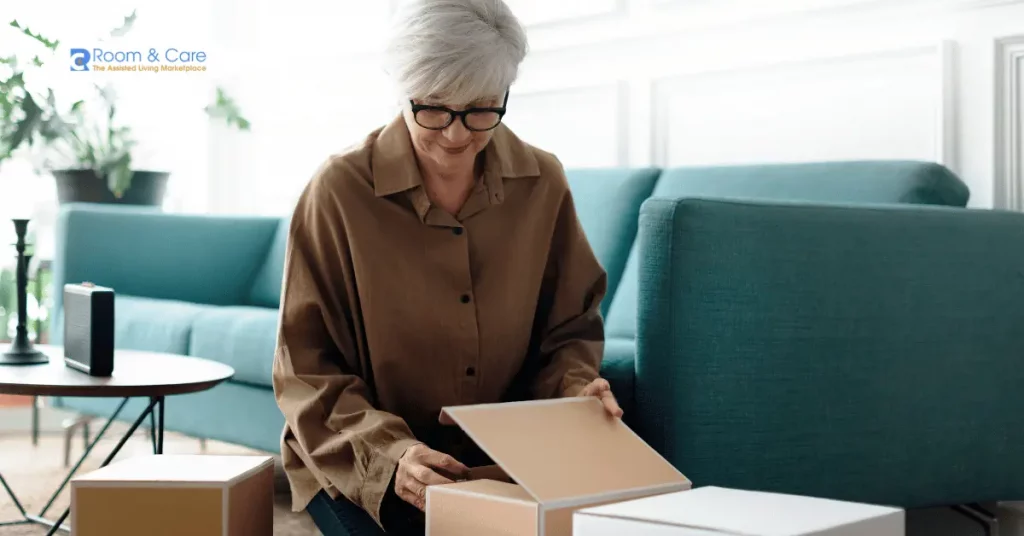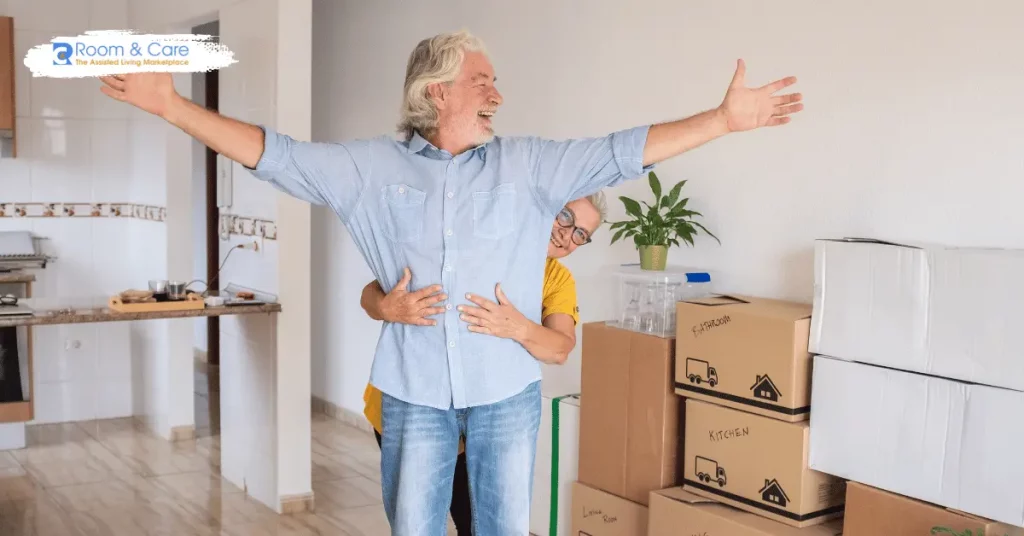

The idea of downsizing becomes more appealing as we age. Whether it’s reducing the upkeep of a large home, managing costs, or moving into a senior living community like an assisted living facility, downsizing offers seniors a chance to simplify their lives. The process of downsizing can be both liberating and overwhelming, but with the right approach, it becomes much easier. In this article, we’ll dive into downsizing tips for seniors that will help make the process smoother and more efficient. We’ll explore practical steps, the benefits of downsizing, and how this decision ties into senior living communities. From moving to a smaller home to transitioning into an assisted living facility, these downsizing home tips will guide you through each step of the journey.
Let’s get started on making downsizing an empowering experience that helps seniors lead happier, healthier lives in a space that works best for them.
Downsizing is often associated with reducing clutter, but for seniors, it holds much more significance. It can mark a shift in lifestyle, focusing on what truly matters—comfort, health, and well-being. According to a report by AARP, 77% of adults over the age of 50 wish to remain in their homes as they age, but as time goes on, the upkeep of a larger home can become physically and financially taxing. Many seniors find that maintaining a large property no longer suits their needs or capabilities. This is why downsizing, whether to a smaller home or a senior living community, is a strategic decision to enhance quality of life.
Reduced Maintenance: Moving to a smaller home or assisted living facility significantly reduces the time and effort needed for household chores, upkeep, and maintenance.
Financial Savings: A smaller home or living in a community designed for seniors can help cut down on property taxes, utility costs, and other expenses that come with larger homes.
Increased Safety: Downsizing often means moving into a space that’s safer and more suited to the mobility and health needs of seniors. Many senior living communities are designed with features like grab bars, ramps, and emergency response systems.
More Time for What You Love: Without the burden of maintaining a large home, seniors can spend more time engaging in hobbies, social activities, and spending time with loved ones.
Before jumping into the process, it’s important to assess your needs, goals, and the type of living environment that will best support your lifestyle. Below, we outline the key considerations seniors should think about before downsizing.
The first step in downsizing is assessing both your current and future needs. Consider your health, mobility, and lifestyle when deciding on the right downsizing option. Are you in good health and simply want to reduce the size of your home for easier management? Or do you foresee needing assistance with daily activities, in which case moving to an assisted living facility may be more suitable?
Independent Living: If you’re still active and healthy but want a low-maintenance lifestyle, independent living communities can be a great option. These communities offer smaller, easy-to-manage living spaces with social opportunities and minimal upkeep responsibilities.
Assisted Living Facilities: If you require some help with daily tasks like cooking, cleaning, or medication management, assisted living facilities provide both housing and the support you need. This can make life easier while still allowing for independence.
Memory Care: For seniors with cognitive impairments such as Alzheimer’s or dementia, memory care facilities offer specialized care in a secure environment, helping ensure safety and a higher quality of life.
Deciding on the right type of home or community depends on your personal situation, and it’s important to plan for the future as you downsize.

One of the hardest parts of downsizing is deciding what to keep, what to donate, and what to discard. For many seniors, this involves letting go of items they’ve accumulated over a lifetime, which can be an emotional process.
Start Early: Give yourself plenty of time to sort through your belongings. Start with non-essential areas like the garage, attic, or basement.
Use the Four-Box Method: Label four boxes as Keep, Donate, Sell, and Discard. As you go through each room, place items in the appropriate box to help organize the process.
Focus on Sentimental Items Last: Start with less sentimental items such as kitchen gadgets or old clothes. Once you’ve made progress, tackle items with emotional attachment, and try to limit keepsakes to the ones that hold the most meaning.
Digitize Photos and Documents: Consider scanning and saving important photos and documents digitally to reduce physical clutter while keeping the memories intact.
Downsizing can save money, but it’s essential to understand all the financial implications. For instance, moving to a senior living community may have upfront costs, but the reduction in home maintenance, property taxes, and utilities can make the transition worthwhile.
Research Housing Costs: Whether moving to a smaller home or an assisted living community, make sure to research all associated costs such as rent, homeowner’s association fees, and healthcare expenses.
Consider Selling Your Home: Selling your current home can provide a significant financial boost, allowing you to fund your new living situation and invest in long-term care if necessary.
Budget for Moving: Factor in the cost of hiring movers, selling or donating unwanted items, and any home repairs needed before selling your current property.
Once you’ve made the decision to downsize and determined the type of living situation that suits you, it’s time to start planning the move. The following tips will help make the process easier and less stressful.
Planning is key when it comes to downsizing. Start by setting a realistic timeline for when you want to complete the move. Begin preparations at least a few months in advance to avoid feeling rushed.
Create a Checklist: Make a list of everything you need to do, from decluttering to hiring movers, and set deadlines for each task.
Research Senior Moving Services: There are moving companies that specialize in helping seniors downsize. They can assist with packing, transporting, and unpacking your belongings in your new home.
Organize Important Documents: Keep important paperwork like medical records, financial statements, and personal identification in one easily accessible place.
Before you start packing, it’s crucial to measure your new home or living space. This will help you determine what furniture and belongings will fit and what you may need to let go of.
Create a Floor Plan: If possible, create a floor plan of your new home to map out where furniture will go. This will help you avoid bringing items that won’t fit or serve a purpose in your new space.
Prioritize Multi-Functional Furniture: Opt for furniture that serves more than one purpose, such as a sofa bed or a dining table with storage, to maximize space in your new home.
Downsizing often means letting go of a lot of items, but that doesn’t mean they have to go to waste. Consider donating gently used items to charity or selling valuable belongings to help fund your move.
Organize a Yard Sale: Hosting a yard sale is a great way to declutter while earning some extra cash.
Use Online Marketplaces: Websites like eBay, Facebook Marketplace, and Craigslist can help you sell larger or more valuable items.
Donate to Local Charities: Many charities will accept donations of furniture, clothing, and household goods. Some organizations even offer free pickup services.
Moving, especially later in life, can be emotionally challenging. Saying goodbye to a home full of memories and adjusting to a new environment is often overwhelming. It’s important to acknowledge these emotions and take steps to protect your mental and emotional health during this transition.
Lean on Family and Friends: Don’t be afraid to ask for help. Family and friends can provide both emotional support and practical assistance throughout the downsizing process.
Focus on the Positive: While moving can be bittersweet, try to focus on the positive aspects of downsizing—such as having less clutter, a more manageable home, or a new opportunity to meet people in your new community.
When moving day arrives, preparation is key to ensuring everything goes smoothly.
Pack a First-Day Essentials Box: Pack a box with items you’ll need immediately after the move, such as toiletries, medications, a change of clothes, and important documents.
Label Boxes Clearly: Label each box with its contents and the room it belongs in. This will make unpacking easier once you arrive at your new home.
Hire Help: Consider hiring professional movers who specialize in senior moves. They can handle the heavy lifting and ensure your belongings are transported safely.

Many seniors choose to downsize into a senior living community, such as an independent living facility, assisted living, or memory care. These communities offer various levels of care, designed to cater to different needs and lifestyles. Understanding your options and knowing what to expect can make the transition to a senior living community smoother.
When it comes to downsizing, seniors and their families often have concerns about the process and the potential impact on their lifestyle. Below, we address some of the most frequently asked questions about downsizing.
For many seniors, downsizing doesn’t mean losing independence—it’s about making life more manageable. Moving to a smaller home or an independent living community can actually enhance your independence by reducing the physical demands of home maintenance. Assisted living facilities also allow for independence while offering support when needed.
If maintaining your current home has become a burden or you feel overwhelmed by the upkeep, it may be time to consider downsizing. Other signs include safety concerns, mobility issues, or simply wanting to simplify your life and focus on the things you enjoy.
While downsizing may have some upfront costs (such as hiring movers or making repairs to your current home), it often leads to long-term savings. Smaller homes typically have lower utility bills, maintenance costs, and property taxes. Moving to a senior living community may also reduce costs associated with homeownership.
It’s natural to feel nostalgic about leaving a home full of memories, but downsizing also presents an opportunity to create new memories in a more suitable space. Keeping sentimental items, like photos or family heirlooms, can help ease the transition and keep you connected to your past while embracing your future.
Downsizing can be a transformative process that opens the door to a simpler, more enjoyable life. Whether you’re moving to a smaller home, an independent living community, or an assisted living facility, planning ahead and following these downsizing tips for seniors will make the transition smoother.
As you embark on this journey, remember that you’re not alone. Room and Care is here to help you find the best senior living options tailored to your needs. We connect you directly with top senior care facilities, including assisted living, memory care, and nursing homes, and Adult Family Homes—without any referral fees or middlemen. Our mission is to ensure that you receive the care you need at a price you can afford.
Now is the time to take control of your future and make downsizing a positive, life-enhancing step. Start by planning ahead, staying organized, and exploring the living options that best suit your needs.